Linen is a really special fibre and should have a bigger place within all of our wardrobes. It is not only perfect for summer clothes because of it is breathable and hardwearing, but it is also a really sustainable option.
As linen clothing becomes more available in shops it may seem like the fashion industry has only just caught on. This ancient fibre however is nothing of a fad. Fragments of linen more than 34,000 years old were excavated in a cave in Georgia, making linen the oldest fibre known to have been used to make fabric.
The reason why these fragments were able to withstand the test of time is because linen is also one of the worlds strongest fibres. It is therefore not surprising then that the oldest surviving garment in the world is also made of linen.
What is linen?
Linen comes from spinning the cellulose fibre growing inside the stalks of the flax plant. The flax plant requires a cool and damp environment to thrive. Today it is cultivated in many many countries across the world. The climate of Europe is particularly suited to growing flax and produces some of the highest quality linen available on the market.
Once the linen fibre has been spun into yarn it can be knitted, crochet, woven, or used in any craft you like. Linen yarn can feel quite rough to the touch but once knitted into fabric and used, the fabric will soften. And here is the magic part. The more it is washed and worn, the softer it will becomes. This is one of the most special things about linen and why linen items are so loved by those who wear them.
A Short History
Unearthed from an Egyptian tomb the Tarkhan dress is estimated to be 5,000 years old. It’s in ancient Egypt and Mesopotamia that the cultivation of linen truly began. There it developed into a prosperous and busy industry. An expression of class and wealth, Egyptians used linen to wrap their mummies, to make robes for the dominant class and sometimes they even used it as a currency.
On the other side of the Mediterranean sea Greeks used linen in place of metal to craft a type of armour worn over the breast called linothorax.
Following Roman invasions linen eventually made its way to Northern Europe. With its cool and humid climate Europe happened to be uniquely suited to the cultivation of flax. Slowly linen was adopted all over the continent for the making of undergarments and bed linen. It became so prevalent that in the middle ages the word ‘linen’ became synonymous of underwear. Linen dominated the textile industry all the way up to the 19th century until it was overtaken by cotton which was faster and easier to produce on modern machinery. It remained in use all through the 20th century where it was mostly used in formal summer wear.
Linen is a sustainable option
When comparing linen to other plant fibres linen comes up trumps. There is increased knowledge by the consumer about the impact that cotton production is having on our planet. And so, with the increased demand for a sustainable alternative to cotton, linen has now found its way back to the forefront of the fashion scene. Cotton is highly resource-intensive. Its cultivation requires a lot of water and most often a lot of pesticides too.
When grown in appropriate conditions, flax does not need irrigation, pesticides or fertiliser, making it one of the most environmentally friendly fibres available. Its cultivation generates very little waste as all parts of the plant are used. Common by-products are flaxseed and linseed oil, animal fodder and bio-materials. Today the European Union grows 70% of the flax produced in the world – predominantly in Northern France, Belgium and the Netherlands.
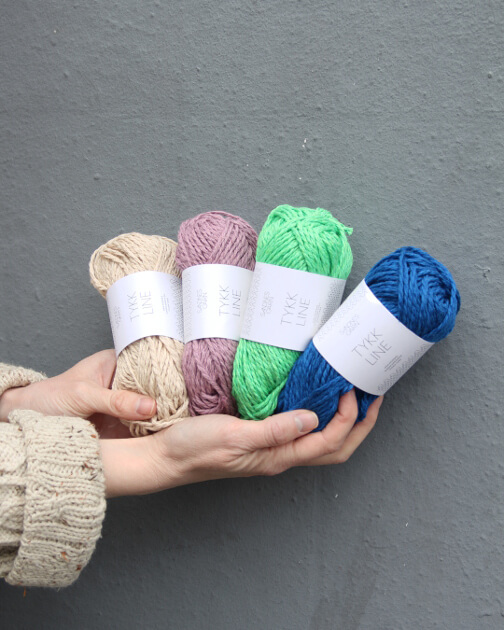
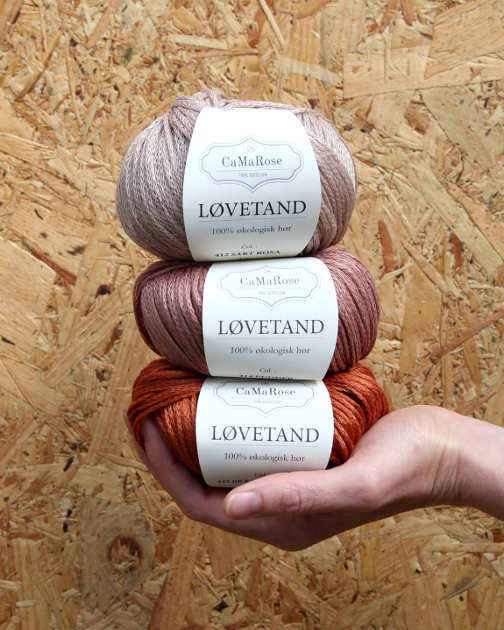
How easy is linen to knit with?
A bit rough to start with linen is one of those magical fibres that gets better and better the more you wear it and the more you wash it. It becomes softer, more drapey and doesn’t lose its beautiful sheen. Lightweight and highly breathable linen is great to keep yourself cool and comfortable during the hot summer months. It is also very durable and will last you for years if provided with good care.
The actual knitting of linen can be quite different from knitting with wool or other animal fibres. Linen does not have any stretch so there is no give in your stitches. This means the knitting can feel like a bit more of a workout, especially if the item is knitted at a tight gauge or you are naturally a tight knitter. After a few rows however this lack of stretch will hardly be noticeable. Here are some tips for when working with linen,
1. Check your gauge
Checking your gauge is important when you are starting any project but especially with linen. Because of the lack of stretch some people find when knitting with linen their gauge can be inconsistent, especially between their knits and purls. You knitting might seem quite loose and uneven but things will look at lot better after washing and blocking.
Make sure you wash and block your swatch. Some linens will tighten up when its washed, and then loosen up once dried and had some movement. So make sure you treat your swatch as you will treat your final item. Then measure your gauge.
2. Hand wind skeins into balls
As discussed linen can feel quite rough to the touch when it is first handled. The more it is handled the softer it becomes. So if you r linen comes in skeins, instead of winding it with a swift and ball winder, hand wind it. This will act as the first softening as the oils in your hands will start to break down the fibres.
3. Join new balls under the arms (or another inconspicuous place)
Linen is a slippery yarn which means the threads won’t stick to each other. When you join a wool yarn and weave in the ends the ends will somewhat disappear into the knitting simply by filling the space and being springy enough to move with the other threads.
Because linen fibres don’t have this stickiness the threads will be slightly more noticeable and more prone to slipping out of their place. This is why joining a new ball under the arm or another inconspicuous place is recommended.
You will not be able to join the threads by splicing so it is best to knit with the end of the old ball and the end of the new ball together for 5-10 stitches before dropping the old ball. For any other ends you need to weave in I would recommend using the duplicate stitch method so that they stay nice and secure.
4. Wash your linen as much as you like
It is not often you will hear a knitter suggest washing your precious knitwear in a washing machine but this is one exception. The fibres are actually even stronger when wet so it will stand up to the agitation of your machine perfectly. If the linen you’ve used is particularly rough you might want to wash your finished item several times before you even start wearing it.
What can I make with linen?
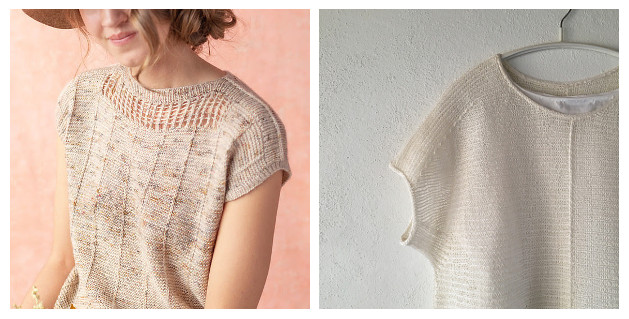
Linen is such a good fibre for knitting summer garments. It is the perfect option to make yourself some light flowy tops and accessories. Yamka by Courtney Spainhower is a loose textured top knitted from the bottom up. It features lots of lovely details like the lace panel under the neckline and the 3-needles bind-off over the shoulders.
HØR n.11 by Lone Kjeldsen is another perfect summer tee knitted sideways starting from the middle of the body to the edge of the sleeve. It is ribbed all the way through and features visible seams.
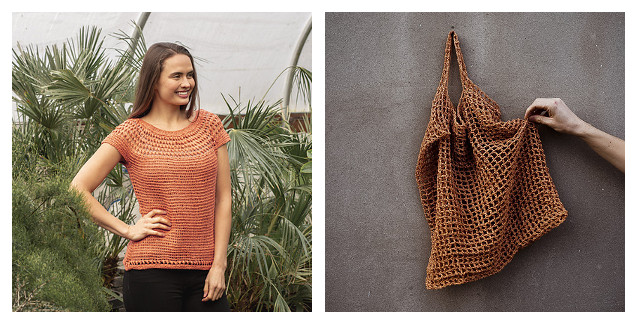
For crocheters we have the Twilight Top by Kabila Sri Ponnusamy , a lovely lacy seamless top worked from the top down. The lace panel around the yoke gives it a nice beezy summer look.
To learn more about wool, plant fibres and yarn make sure to have a look at the rest of our Know Your Fibre / Know Your Sheep series.
Until Next Time… Happy Knitting!



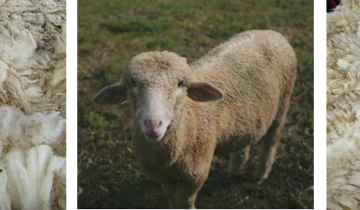
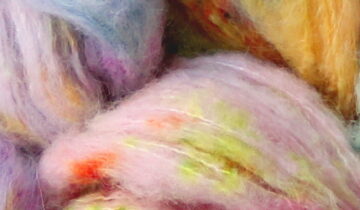
 No products in the basket.
No products in the basket.